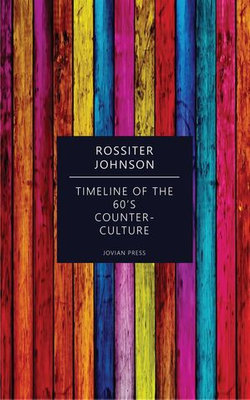The counterculture of the 1960s refers to an anti-establishment cultural phenomenon that developed first in the United Kingdom (UK) and the United States (US) and then spread throughout much of the Western world between the early 1960s and the mid-1970s, with London, New York City, and San Francisco being hotbeds of early countercultural activity. The aggregate movement gained momentum as the American Civil Rights Movement continued to grow, and became revolutionary with the expansion of the US government's extensive military intervention in Vietnam. As the 1960s progressed, widespread social tensions also developed concerning other issues, and tended to flow along generational lines regarding human sexuality, women's rights, traditional modes of authority, experimentation with psychoactive drugs, and differing interpretations of the American Dream. Many key movements related to these issues were born or advanced within the counterculture of the 1960s.
As the era unfolded, new cultural forms and a dynamic subculture which celebrated experimentation, modern incarnations of Bohemianism, and the rise of the hippie and other alternative lifestyles, emerged. This embracing of creativity is particularly notable in the works of British Invasion bands such as the Beatles, and filmmakers whose works became far less restricted by censorship. In addition to the trendsetting Beatles, many other creative artists, authors, and thinkers, within and across many disciplines, helped define the counterculture movement.
Several factors distinguished the counterculture of the 1960s from the anti-authoritarian movements of previous eras. The post-World War II "baby boom" generated an unprecedented number of potentially disaffected young people as prospective participants in a rethinking of the direction of American and other democratic societies. Post-war affluence allowed many of the counterculture generation to move beyond a focus on the provision of the material necessities of life that had preoccupied their Depression-era parents. The era was also notable in that a significant portion of the array of behaviors and "causes" within the larger movement were quickly assimilated within mainstream society, particularly in the US, even though counterculture participants numbered in the clear minority within their respective national populations.
The counterculture era essentially commenced in earnest with the assassination of John F. Kennedy in November 1963. It became absorbed into the popular culture with the termination of U.S. combat military involvement in Southeast Asia and the end of the draft in 1973, and ultimately with the resignation of President Richard Nixon in August 1974.
In the broadest sense, 1960s counterculture grew from a confluence of people, ideas, events, issues, circumstances, and technological developments which served as intellectual and social catalysts for exceptionally rapid change during the era.



Share This eBook: